How to Add Music to iMovie on iPhone
iMovie does not come preloaded with a ton of music tracks and so you need to add your own tracks to it and then add them to your videos. This guide focuses on how to add music to iMovie on an iPhone so your videos can be made musical.
Often what makes a video more interesting is not just the visuals you see on your screen but the music that plays in the background of the video. It is this audio part of the video that makes you feel and not just watch the video on your devices.
If you want to add any kind of music to your videos, you can do so using the iMovie app on your iPhone. Before you do that, though, you will need to add your music to the iMovie app on your device. You can then use that music for your videos to make them more appealing. The following post shows multiple ways to add music to iMovie on an iPhone.
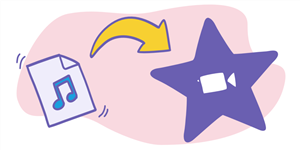
Add Music to iMovie on iPhone
Part 1: How to Add Music to iMovie on iPhone from iTunes
If you are an Apple fan, it is likely that iTunes is your default music manager. If this is where your music files happen to be, you can easily have them copied over to the iMovie app on your iPhone. The procedure to add iTunes music to iMovie is pretty easy and is detailed below.
- Launch the latest version of iTunes on your computer.
- Plug-in your iPhone to your computer, find it in the iTunes app, click on it.
- Select the Music tab, tick-mark Sync Music.
- Click on Done at the bottom.
- When the music is synced, you will be able to add your iTunes music tracks to your iMovie projects on your iPhone.
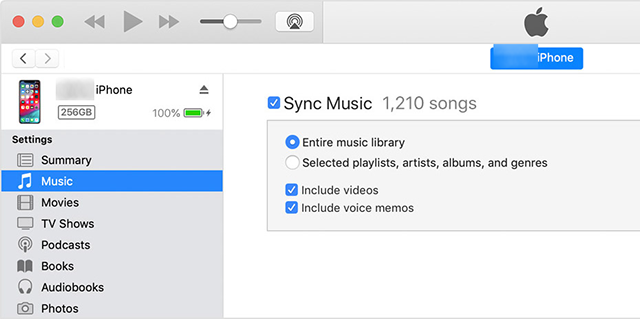
Add iTunes Music to iPhone
What the above procedure did was copy all the iTunes music files from your computer over to your iPhone. Now that the files are on your iOS device, you can open the iMovie app and import these files into your videos. It is as easy as that.
Part 2: How to Add Music to iMovie using Themes
If you have ever done any projects in iMovie before, you have likely seen the various themes the app offers. These themes come preloaded with transition effects and music files.
You can use these music files in your own videos as well if you want. Getting the iMovie Theme music files and adding them to your videos is fairly easy and is shown below.
1. Launch the iMovie app on your iPhone, tap on the Projects.
2. Tap on Create Project to start a new project.
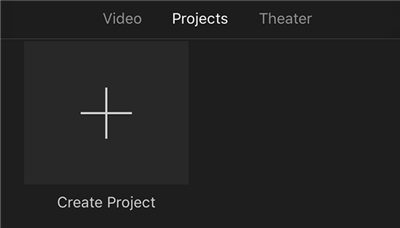
Create a Project in iMovie
3. Select Movie as the project type and it will continue.
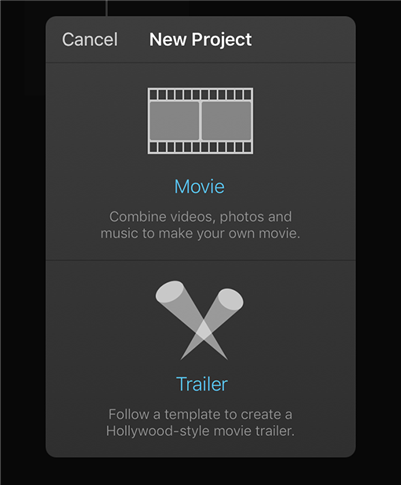
Select Project Type in iMovie
4. You will be asked to choose the video you want to make a part of your project. Choose a video from your albums and then tap on Create Movie at the bottom.

Add Videos to the Project
5. When the video is added to the project and is available on the timeline, tap on it and then tap on the gear icon located at the bottom-right corner of your screen.
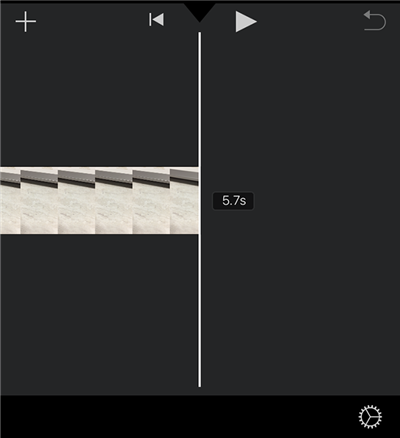
Settings Icon in iMovie
6. You will find several options related to your project that you can customize. And here you need to enable is Theme Music.
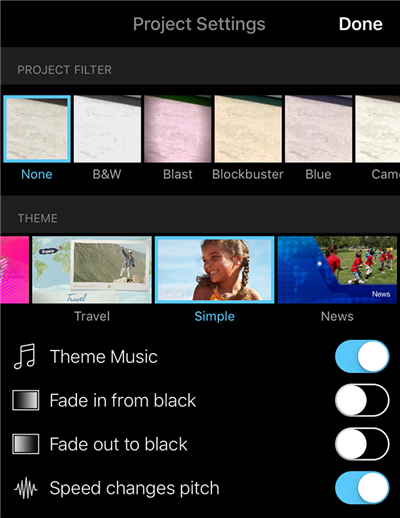
Add Music from Themes to iMovie
7. Once you enable the option, you can then use one of the many themes in your video file.
8. The theme music will be added to your file. Tap on Done at the top to save the changes. That is how you add music to iMovie on an iPhone using themes.
Part 3: How to Add Music to iMovie from iPhone
If you already have the music files you want to add to your videos saved on your iPhone, you can directly use those in your videos. Your iPhone allows you to import music from local storage and use it in your video editing tasks.
1. The first thing you will want to do is either create a new project or edit an existing one in the iMovie app on your iPhone.
2. Tap on the + (plus) sign on your screen to add a new item to your project. This item will be music.
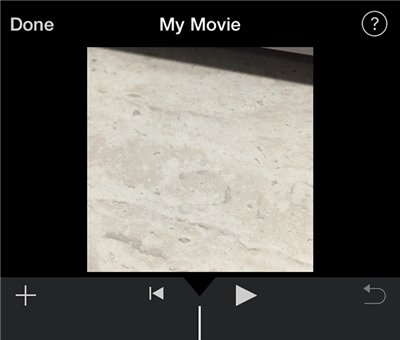
Add Music to iMovie from iPhone
3. On the following screen, you will find several items you can add to your video. Tap on the one that says Audio as you want to add music to your video.
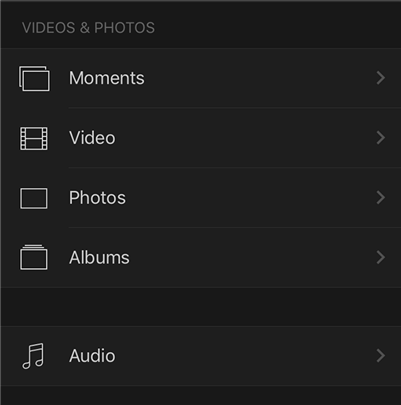
Select Audio
4. It will open your Music app playlists for you to choose a music track from. Select any of your tracks and add them to your project.
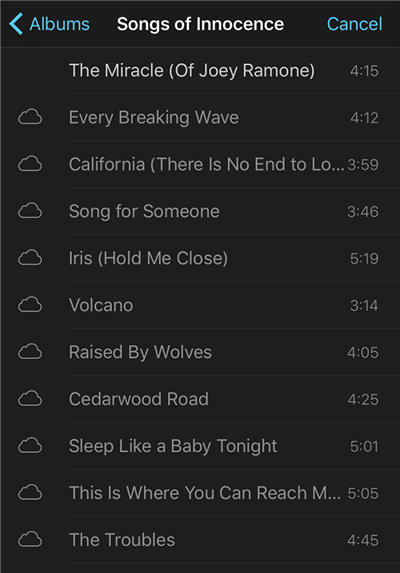
Select and Add iPhone Music to iMovie
Adding music to iMovie from your iPhone itself is extremely easy as the music is locally available on your device.
Part 4: How to Add Music to iMovie from YouTube
If the music that you want to add to iMovie is located on YouTube, you will need to go through a few steps before you can add it to your videos. It is because iMovie does not support adding content directly from YouTube.
1. Use an app like AnyTrans to download your music from YouTube and transfer it to your iPhone.
2. Open the iMovie project, tap on the + (plus) sign, select Audio.
3. Select your YouTube audio file. Your selected YouTube music will be added to your iMovie project.
Bonus Tip: How to Add iMovie Sound Effects
iMovie has various sound effects as well for you to add to your videos. These can be added from within the app on your iPhone.
1. Open the iMovie app and launch your project.
2. Tap on the video spot where you want to add a sound effect and tap on the + (plus) sign.
3. Select Audio on the following screen and then choose Sound Effects.
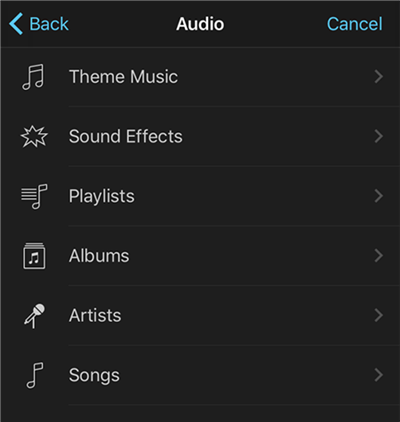
Add Sound Effects in iMovie
4. Select the effect you would like to add to your video and it will be added. Your video should now have your chosen sound effect in it at your specified time.
The Bottom Line
Adding music from various sources to iMovie on the iPhone is one of the easiest tasks to do. Our guide above makes it even easier for you so you can get all of your music files available in the iMovie app on your iOS device.
More Related Articles
Product-related questions? Contact Our Support Team to Get Quick Solution >

